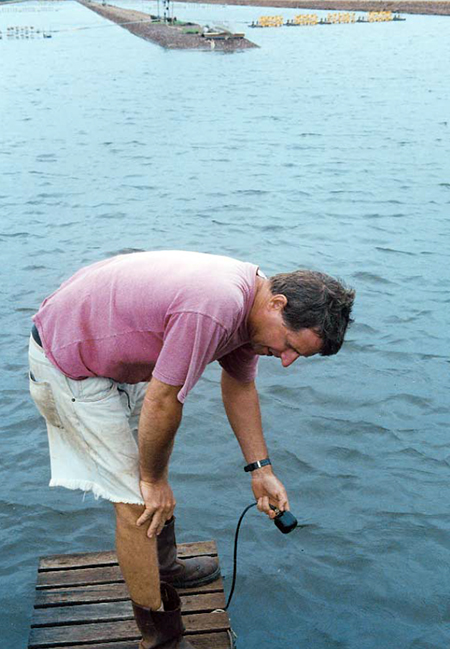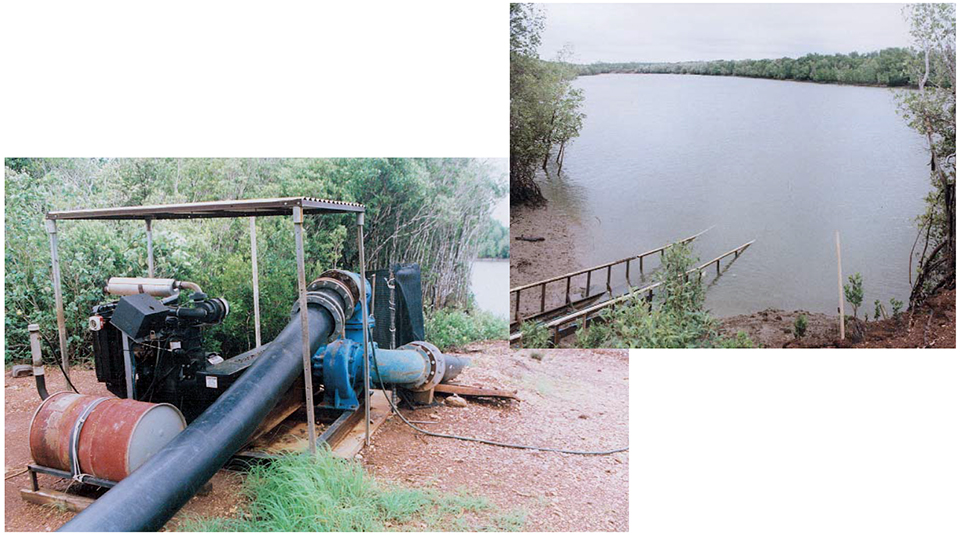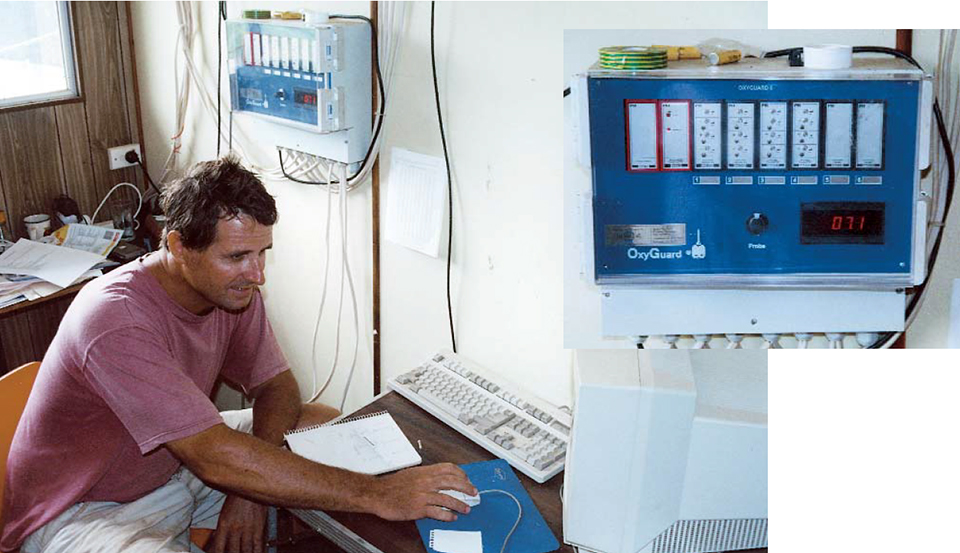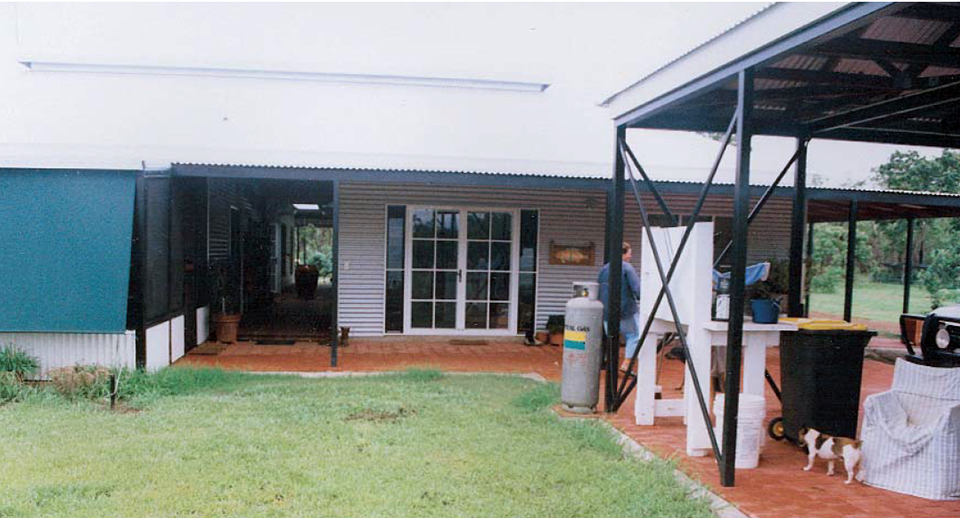Novel approach could be model for the future

Family-owned and operated shrimp farms are common throughout much of Southeast Asia, where costs of living are low and revenue from one or two small ponds (0.5 to 1.0 hectares) is sufficient to comfortably support a family. In countries where costs of living are higher, revenue requirements to support a family dictate greater culture area than a single family can manage. This reality has precluded the development of family farms in many areas. An interesting exception to this rule is a successful farm developed in Australia by Adam Body, whose methods may become the model for family shrimp farms in developed countries.
Body, an aquaculture graduate of the University of New South Wales, gained experience in shrimp farming from stints in Taiwan and Southeast Asia. He realized that the convention of using one worker to produce 1 to 5 metric tons (MT) of shrimp would not be feasible in his native Australia. Systems were needed to generate higher pond yields using less labor.
Farm design
He undertook the challenge of developing a family shrimp farm near Berry Springs, outside Darwin, in Australia’s Northern Territory. He built a charming house for his young family on a hill overlooking the farm site. The farm presently consists of four ponds of 2.5 ha each, an office storage building, and a workshop/generator house. The ponds are long and narrow in shape (50 × 500 meters) with an earthen baffle down the center. Soils are heavy clay, which allows side slopes of levees approaching 1:1. The property has considerable area for construction of additional ponds.
Farm management
Water is drawn by a centrifugal pump from a nearby tidal estuary and passed through double filter socks to remove predators before entry into ponds. Ponds are fertilized to develop a rich algal bloom. Alkalinity is increased to 100 milligrams per liter at stocking and to about 150 milligrams per liter by harvest using sodium carbonate. Penaeus monodon postlarvae are purchased from hatcheries in Queensland and stocked at a density of 45 to 50 per square meter. Little or no water exchange is required to support the current production rate of 4 to 6 MT per hectare per cycle. A combination of probiotic additions and molasses is used to reduce periodic peaks of ammonia.

Four long-arm paddlewheels positioned at intervals down each side of the baffle create a racetrack flow pattern, which keeps the bottom clean. However, nitrite tends to accumulate – perhaps due to deposits of organic material underneath aerators and at the end of the ponds just after the water turns at the baffle. Body has already devised plans to reduce this accumulation using a modification of the central baffle.
Electrical power is generated on site using three diesel generating units of varying sizes. Given the high cost of fuel in Darwin, conservation of energy is a major priority. Consequently, Body installed an automatic oxygen monitoring system using continuous monitoring probes connected to a personal computer. The membranes on the probes last the entire cycle and require only that they be wiped off every few days and calibrated with a portable dissolved oxygen meter. The monitoring system measures the dissolved oxygen level in each pond every 15 minutes and plots the data on the computer screen in the small office beside the ponds as well as on the PC in Adam’s home. Based on the sinusoidal curves displayed by this system, paddlewheels are operated only as needed and electrical cost is conserved.
Feed is imported from Queensland, Taiwan or Indonesia. It is distributed three times per day by a truck-mounted blower from the levees. FCR averages 1.8 to 1.9.

Harvest, processing, and marketing
Shrimp are harvested about five months after stocking at a size of 25 grams using live harvest traps that can capture as much as 320 kilograms per hour. Captured prawns are cooked on site, chilled in a brine solution, packaged in Styrofoam containers and air shipped to the market in Sydney.
Body employs one assistant to help him manage his 10 ha of ponds. Together they can produce 60 MT per hectare per cycle, which is equivalent to one worker to 30 tons of production. At this ratio, the family farm is profitable, but there is much opportunity for reduction of costs. Postlarvae, feed, and other inputs are expected to decline as the industry develops and local suppliers become established in the Darwin area.

Conclusion
A highly productive shrimp farm near Darwin, Australia, produces about 60 MT per cycle with only two workers. This farm could become a model for the development of family shrimp farms in developed countries.
(Editor’s Note: This article was originally published in the December 2000 print edition of the Global Aquaculture Advocate.)
Now that you've finished reading the article ...
… we hope you’ll consider supporting our mission to document the evolution of the global aquaculture industry and share our vast network of contributors’ expansive knowledge every week.
By becoming a Global Seafood Alliance member, you’re ensuring that all of the pre-competitive work we do through member benefits, resources and events can continue. Individual membership costs just $50 a year. GSA individual and corporate members receive complimentary access to a series of GOAL virtual events beginning in April. Join now.
Not a GSA member? Join us.
Author
-

George W. Chamberlain, Ph.D.
Global Aquaculture Alliance
St. Louis, Missouri, USA
Tagged With
Related Posts

Innovation & Investment
20 years of the Global Aquaculture Alliance
A timeline of key milestones and achievements by the Global Aquaculture Alliance and its third-party aquaculture certification scheme, Best Aquaculture Practices (BAP).

Innovation & Investment
Aquaculture Exchange: Bill Herzig
The Global Aquaculture Alliance will honor seafood procurement expert Bill Herzig with a Lifetime Achievement Award during its annual GOAL conference. He talked to the Advocate about top-to-bottom commitment to sustainability and the ambitious lobster aquaculture project he spearheaded in Malaysia with Darden Restaurants.

Health & Welfare
Born in Hawaii, SPF broodstock shrimp industry faces globalization
The next step for shrimp breeding will be developing animals that aren’t just disease-free, but increasingly resistant to multiple pathogens. The industry is globalizing, with suppliers setting up shop overseas. But its birthplace will always be Hawaii.

Responsibility
Case studies of world shrimp farming
There have been few efforts to objectively assess the environmental and socioeconomic status of shrimp farming until recently.

